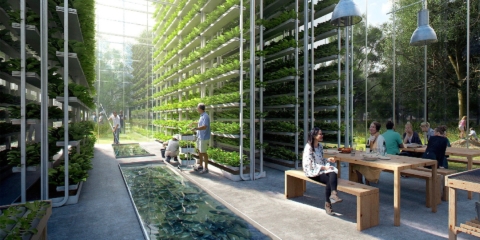Would you like to get notifications from Christian?
Nvidia's new Instant NeRF technology can turn a set of photos into 3D scenes in seconds. The technology uses neural rendering to create realistic 3D models from 2D inputs, meaning that it can create models of real-world objects and environments from photos. NVidia's NeRF is also able to render images of these scenes in milliseconds, making it ideal for creating real-time 3D applications such as video games and virtual reality experiences. Nvidia has said that Instant NeRF will be available to developers later this year.
This technology has a number of potential applications in both the gaming and enterprise sectors. In the gaming sector, NeRF could be used to create realistic 3D worlds for video games. This would allow developers to create more immersive and realistic gaming experiences. In the enterprise and entertainment sector, NeRF could be used for applications such as virtual reality and augmented reality. This would enable businesses to create more realistic and lifelike training simulations and experiences for their employees.
What does this mean for the future? This new technology represents a significant advance in Nvidia's 3D rendering capabilities. It is likely that the NeRF technology will become increasingly popular among 3D content developers in the gaming and enterprise sectors in the coming years. For example, Nvidia's Instant NeRF technology has the potential to change the way we interact with 3D applications and could have a major impact on the creation of user-generated photorealistic 3D content. With the advent of this Ai-powered technology, 'everyday people can now construct and develop sophisticated 3D models cheap and fast. Creating 3D avatars, game characters, or 3D AR product presentations will become a breeze.
Christian is a futurist and trendwatcher who speaks about the impact of exponential technologies like AI on organizations, people, and talents. Christian tailors his presentations to your audience's specific industries and needs.



Our world is changing at an exponential rate! A big tidal wave of digital transformation and disruption is coming at us fast. Many organizations see this wave as a threat and experience stress, but there are also organizations that just see this wave as an opportunity.

Imagine sitting with just 10-15 fellow executives at a premier location, gaining clarity on the impact of AI on your industry while enjoying an exquisite dining experience. These are not just meetings—they are transformative moments that will shape the future of your organization



In the future, 3D printing and generative design will allow for products to be designed in a more decentralized manner, and production will take place closer to the customer and fully on-demand. 3D printing technology will also allow for more customization and personalization of products.


The agricultural industry is ripe for disruption. Robotics, AI, and IoT are all technologies that have the potential to radically transform the way we grow food. In combination with vertical farming, these technologies could increase the efficiency and quality of agricultural products.

A human-centered society is one that puts people first and where technology is used to unite and empower people. It is a society that values biological life and dignity above all else. It is a society that recognizes the importance of human relationships and works to strengthen them. In a human-centered society, all members of the community are valued and treated with respect.


The future of healthcare is here. New technologies like AI, IoT, big data, and smart sensors make it possible to become the CEO of your own health. Imagine that your phone can listen to your voice and AI algorithms can detect small nuances in the tone of your voice that indicate specific diseases.
